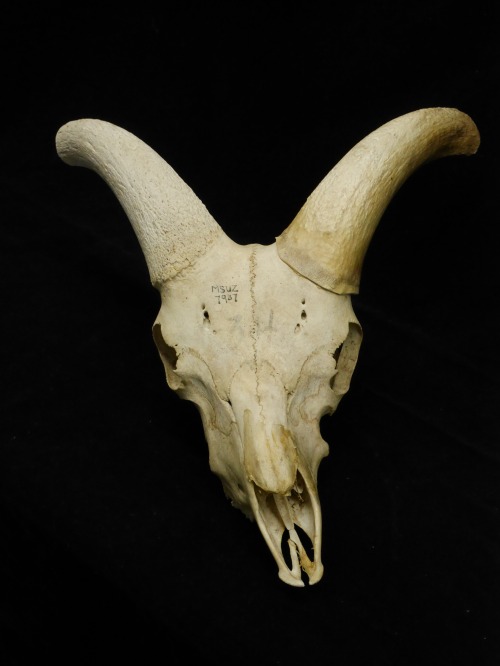#philip l wright zoological museum
Ovis canadensis “Bighorn Sheep” Bovidae, male, 3 years old
Wild Horse Island, Flathead Lake, MT
September 27, 1961
col. Wesley Woodgerd (photo Robert Niese)
Bighorn Sheep were first transplanted to Wild Horse Island in 1939 and, from a herd of only 8 breeding adults, the population grew to be more than 200 strong. By the 60s and 70s, when Wesley Woodgerd was studying their herds, the maximum number of sheep recorded on the island at one time exceeded 240 individuals. This deformed young male was born around a time when the herd was likely suffering greatly from inbreeding depression which may have contributed to its odd schnoz. Alternatively, without any predators on the island, perhaps this individual was injured at a young age and managed to survive and develop this malformity from its wounds. Learn more about the Wild Horse Island Bighorn Sheep here.
Post link
This natural history nerd has been promoted to Natural History Curator! Currently serving as the (only) curator of the Philip L. Wright Zoological Museum (UMZM) at the University of Montana!
Prepare to be bombarded with photos of skeletal material, plumage macros, and taxidermy selfies.
(P.S. if you’d like to buy one of these awesome Slater Museum of Natural History shirts,contact Katy P.)
Post link
American White Pelican (Pelecanus erythrorhynchos) Pelecanidae
Yellowstone River, Saugus, MT
13 May 1975
prep. Larry DePute; photo. Robert Niese
Unlike their brown counterparts, the American White Pelican is an overland migrant, spending its winters in the Pacific and Gulf of Mexico before flying thousands of miles to breeding grounds in Canada and the northern United States. To facilitate this epic travel, these birds have an 8-10 foot wing span, the second-largest of any bird in North America. Now that we have fully articulated this massive specimen, we’re not entirely sure what to do with it… He can hardly fit through doorways!
Post link



